Galápagos Islands
Things to DO
Isla Española
Española is the southernmost of the Galapagos Islands and is also one of the oldest. Geologists estimate it is about four million years old. Española is a classic shield volcano, created from a single caldera in the center of the island. Over thousands of years, the island slowly moved away from the Galapagos hot spot where it was formed and the volcano became extinct. Erosion began to occur, eventually resulting in one of the flattest islands in the archipelago with one of the lowest elevations.
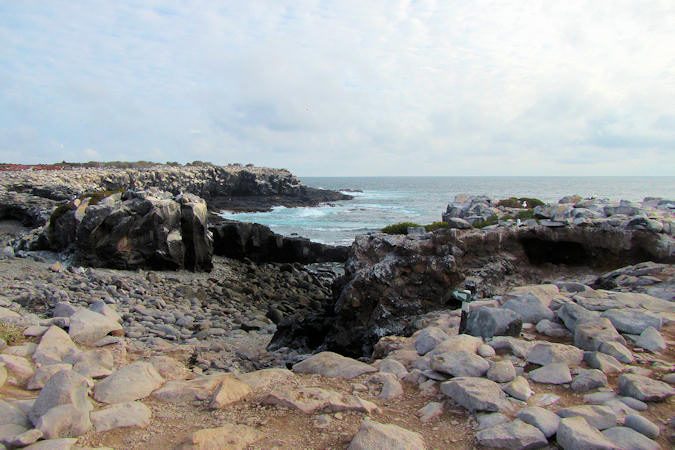 |
|||||
Punta Suárez
One of the most popular visitor sites in Galapagos, Punta Suarez has an amazing variety and quantity of wildlife.
Brightly-colored red and green marine iguanas can be found lining the coastal areas near the landing site. They are the only marine
iguanas that remain brightly colored throughout the year.
The trail passes by a small beach occupied by more sea lions and large and colorful Española Lava Lizards.
The highlight of this visitor site — and perhaps one of the highlights of the Galapagos Islands — is strolling along the edge of the
Waved Albatross breeding colony. With a population of 25.000 to 30.000, nearly the entire world population of the adult birds can
be found on Española between April and December.
Their grace in the air is sharply contrasted by their comic clumsiness on land. The entire colony leaves Española by January to fish
for three months before returning.
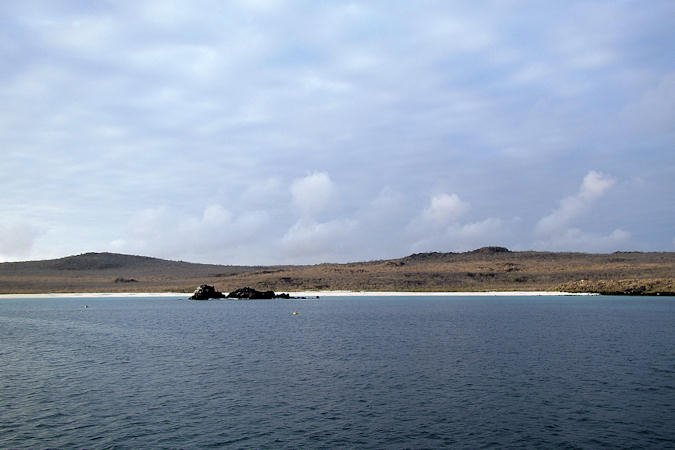 |
|||||
Gardner Bay
The beach at Gardner Bay offers one of the best beaches to experience “relaxing beach time” in Galapagos.
The expansive white sand beach (one of the longest in Galapagos at
2 km) attracts many napping sea lions, as well as tourists. There is
no inland trail and visitors are required to remain on the beach.
There are three species of Darwin’s finches; large cactus, small ground and warbler. They're all part of the Darwin's finch family and may
hop along after you hoping to get at some of your freash water.
Española Mockingbirds can also be seen here; be aware they are fearless and frequently land on visitors’ heads and shoulders in search of
food.
An island a short distance offshore provides good, but sometimes rough, snorkling. This snorkeling site also offers a wonderful chance
to swim with playful sea lions.
Isla Floreana
Floreana was the first island to be colonized by Ecuadorians in 1832. It was a penal colony that didn’t last long because of the lack
of fresh water.
A fish canning plant was established there by Norwegian immigrants in 1924; it lasted only a couple of years.
A few years later, Friedrich Ritter, a German doctor, arrived with his female companion Dore Strauch.
A pregnant Margret Wittmer arrived in 1932, with her husband Heinz and her step-son Harry. They built a house and also established
an agricultural lifestyle before giving birth to their son Rolf, the first person to be born in Galapagos.
Floreana is most well-known for being the site of several mysterious disappearances in the 1930s—the one receiving the most attention
being that of a supposed Austrian baroness, who had arrived shortly after the Wittmers with her three servants
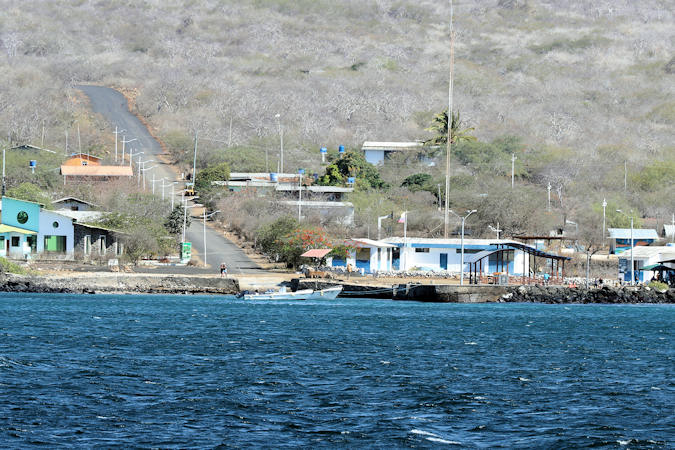 |
|||||
Puerto Velasco Ibarra
Approximately two-thirds of Floreana’s 100 residents live in the port town; the remaining one third live in the volcanic highlands.
The Pension Wittmer, run by the Wittmer family, descendants of one of the first families to live in Galapagos, is the only hotel and
it boasts the only telephone on the entire island.
This small hamlet also has a newly-built church and one school with two teachers. There are currently no restaurants or bars.
Asilo de la Paz
Asilo de la Paz, is a 45-minute ride from town. It is primarily an historical site where visitors can view the cave of the pirates and
the fresh water spring that is the main source of water for the population.
Both are located at the base of Asilo de la Paz, a 450-m high cone.
A nearby corral contains the various giant tortoises that were originally owned by residents of Floreana.
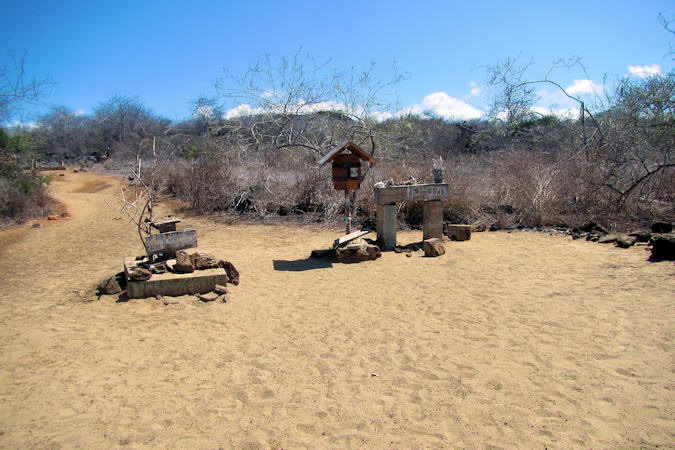 |
|||||
Post Office Bay
A group of whalers placed a wooden barrel here in 1793 and called it a post office. Traveling seamen would leave addressed letters in
the barrel and hope that the next seamen to come along might be headed in the direction of their letters’ destinations.
Today, visitors leave their own postcards and sift through the current pile of cards—if they find one that they can hand-deliver, they
take it with them.
Devil’s Crown
Devil’s Crown is a volcanic crater that has been eroded away by the waves, with a few rocky spikes protruding above the water in a
semicircular pattern. Inside the crown, snorkelers find an underwater oasis of coral reefs and the marine species that are attracted
to them, such as King Angel Fish, Balloon Fish, Hawkfish, Yellowtail Grunts and Sea Stars
Isla Isabela
It is the largest of all the islands, measuring 120 km long and greater in size than all of the other islands combined.
Tagus Cove on the northwestern side of the island provided a sheltered anchorage for pirates, buccaneers, whalers, and others.
Darwin visited Tagus Cove in 1835.
There are many relatively new lava fields and the surrounding soils have not developed sufficient nutrients to support the varied life
zones found on other islands.
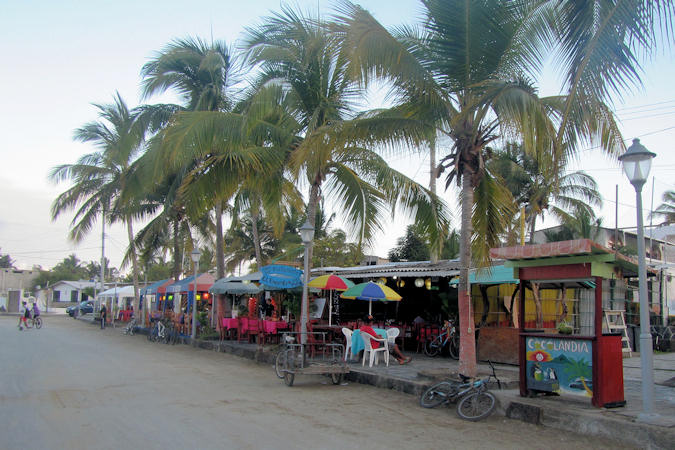 |
|||||
The island’s rich fauna is beyond compare. It is home to more wild tortoises than all the other islands combined, with a separate
species on each volcano.
Puerto Villamil
Villamil is the most beautiful townsite in Galapagos, with its long, white-sand, palm-lined beaches and several brackish-water lagoons
frequented by pink Flamingoes, Common Stilts, Whimbrels, White-cheeked Pintails, and Gallinules.
The majority of Isabela’s residents live in the port town of Villamil. Until recently, the population was primarily involved in fishing
and agriculture and had little connection to tourism.
Then in the 1990s, development for tourism began in earnest. A small airport was completed in 1996 for inter-island flights. The number
of hotels grew from a single hotel in 1980, to three in 1990, to 13 hotels by 2006. The number of bars and restaurants has grown from
only two in 1980 and 1990 to 18 in 2006.
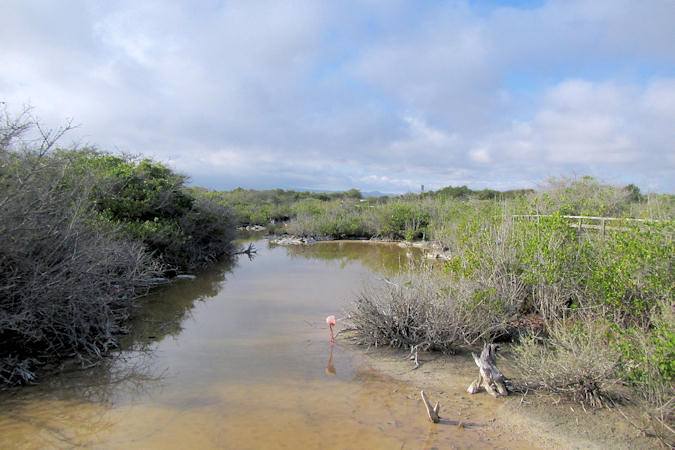 |
|||||
Centro de Crianza de Tortugas
The Tortoise Center of Isabela was completed in 1994 and houses tortoises from the populations of southern Isabela, many of which have
experienced relatively high levels of poaching within the last 10-20 years.
Visitors can see both hatchlings tortoises and the older breeding animals.
Villamil Lagoons
An interpretive trail runs from town, through the Lagoons, and ends at the Tortoise Center, approximately 1.5 km from town. The beach and
lagoons near Villamil are the best sites in the archipelago to view migratory birds. Black-necked Stilts and Flamingoes are two of the
most common resident species.
Volcán Sierra Negra
Northwest of the tiny settlement of Tomás de Berlanga lies the massive Volcaán Sierra Negra (1.490 m), which last erupted in late 2005.
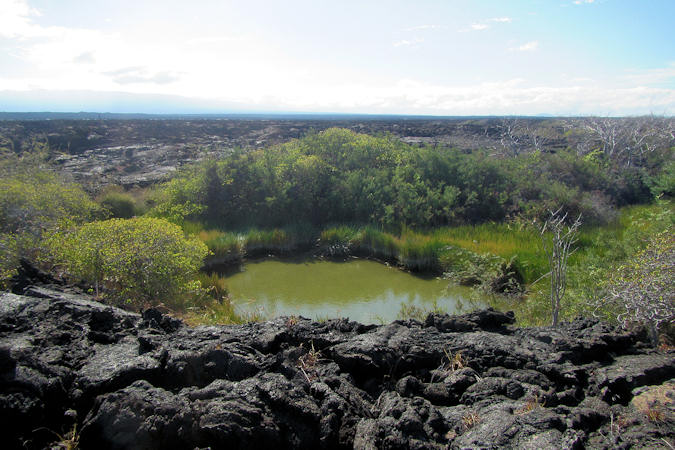 |
|||||
Its caldera measures 10 km across from north to south and 9 km from east to west, and is considered to be the second largest caldera
in the world.
At the other end of the caldera visitors who want to make a longer trek can view a system of fumaroles, known as the Sulfur Mine. Sulfur
in the form of crystals has been deposited on the fumaroles for thousands of years.
Punta Moreno
At first glance, Moreno Point appears to be a lifeless lava flow typical of hundreds of others in the archipelago. However, its black
surface at the base of Cerro Azul is dotted with numerous lagoons containing a wide variety of life.
Commonly seen species include Flamingoes, Paint-billed Crakes, White-cheeked Pintails and occaisionly White-tipped Reef Shark.
The lava flow is very young and has several endemic species known to be early pioneers in barren lava fields.
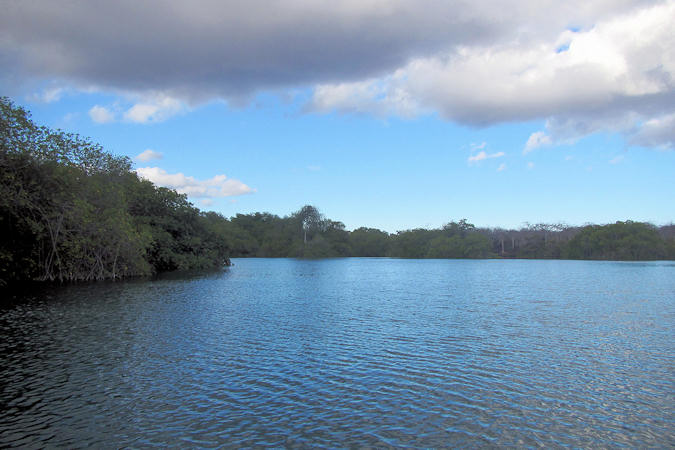 |
|||||
Elizabeth Bay
While no visits are allowed on land, this visitor site is included in many tours to the western islands. The visit is by dinghy and
snorkeling is also allowed.
The lagoon at Elizabeth Bay is a resting and feeding place for sea turtles. The mangroves surrounding it are principally Red and Back
Mangroves. Visitors will also see Rays, Flightless Cormorants, Pelicans, Lava Herons, and other species.
Urbina Bay
A long, loop trail leads the visitor away from the beach and into the arid zone of the island. Here visitors may have the chance to see
Giant Tortoises, Land Iguanas, and Galapagos Flycatcher.
The most unique feature at Urbina Bay is the result of an uplift of the island in 1954, when a 6-km stretch of coral reef was raised up
5 m, stranding the coral heads above sea level with the new coastline more than a km away.
The snorkeling conditions are excellent
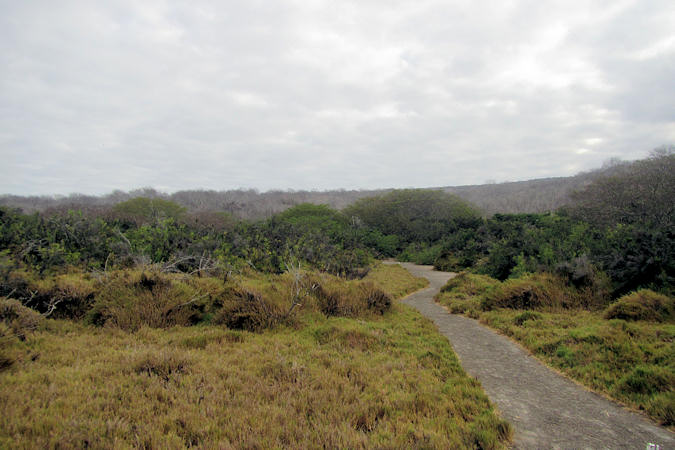 |
|||||
Tagus Cove
A favorite site of the early pirates and whalers, many of these early visitors wrote their names on the cliffs along the shore. The oldest
include the Phoenix in 1836 and the Genie in 1846.
The name Tagus comes from an English war ship that passed by the islands in 1814 looking for Giant Tortoises.
A short, steep hike passes Darwin Lake, which sits within a tuff cone. It is approximately 9 m deep and filled with salt water.
This site is an excellent place for viewing landbirds, including Ground and Tree Finches, Yellow Warblers and even sometimes the Woodpecker
Finch. An occasional Land Iguana or Giant Tortoise can also sometimes be observed.
A dinghy ride along the cliffs provides viewing of the geologic features as well as penguins and other bird species.
There are good snorkeling opportunities in the cove.
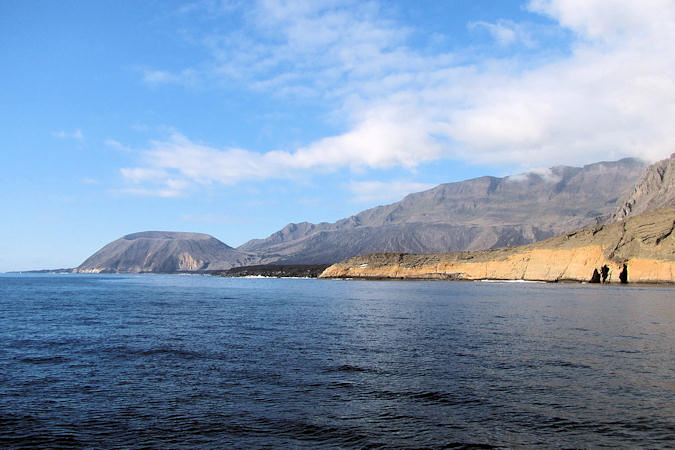 |
|||||
Punta Vicente Roca
Visits at Punta Vicente Roca are solely in the water – by dinghy or snorkeling.
The geological formations are very impressive and provide a beautiful backdrop for numerous nesting birds, including Blue-footed and
Nazca boobies, Gulls, Storm Petrels, and Brown Noddy's.
The water in the western archipelago is cold due to the upwelling of the Cromwell Current from the west, offering an abundant
food supply for marine species. It is common to observe “feeding frenzies”, with groups of Whales, Dolphins, Sea Lions,
and other marine birds feeding simultaneously.
To the south of the cove, there is a small colony of Fur Seals.